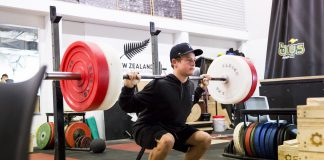Which should I do first – cardio or weights? Is doing cardio better than lifting weights for me? These are two questions I’ve found to have been asked quite frequently, and well, the answer has been different every time. There is no specific right or wrong answer, and here is why…
At the end of the day, it is really only you who can provide the answer to those questions. It comes down to your goals and what you want to achieve from your training. There are a number of different ways we can approach this subject, and the starting point depends on your level of fitness and ambition. If you are a serious competitive strength athlete or someone who is wanting to focus the majority of their training time in the weights room increasing strength, gaining muscle or wanting to run a half/full marathon, I would advise keeping weight training and cardio separate from each other.
If you still wanted to keep a medium to high volume of one or the other training forms in your week’s training (2-3 times per week), ideally keep them to two separate days, but if it needed to be done on the same day, a minimum of 8 hours between the two is recommended. A study conducted by Sporer & Wenger (2003) found that 8 hours is the shortest time frame in order to minimise disruption to the beneficial signalling brought about by weight training. These findings contribute to the general consensus brought about by other research done on this topic.
For the potentially vast majority of us who are not competitive athletes, or who want to generalise their training and not focus on one or the other, we CAN perform both cardio and weight training in the same session and will find this beneficial. If you are limited to 2-3x 1 hour sessions per week, you will get a far greater overall health benefit by performing both cardio and weights together than dropping one. Yes, if you combine them then it is unlikely that you will be a high level powerlifter or ultra-marathon runner, but you can still get in GREAT shape.
Practically, my suggestion would be to plan your workouts. If you perform a split programme, you will see benefit from doing a form of cardio which doesn’t put direct stress on the muscles just worked (eg: you have trained legs in the weight room, so use a cardio machine like a ski erg or grinder which trains the upper body). Cardio performed after weight training has been shown to have less impact on performance, but at the end of the day it is really up to you what you want to do – if you feel better doing cardio before weights then do that, and vice versa.
In an ideal world where we have unlimited time on our hands to go to the gym, it is best to split cardio and weight training into two separate sessions. Because this not the case in most circumstances, if you are limited for time and not wanting to specialise in one particular sport or training and just want to improve general health and well-being, then performing both cardio and weights within a session is a great use of time and will provide you with a great workout.
 Email: [email protected]
Email: [email protected]
Phone: 021 149 7284






































